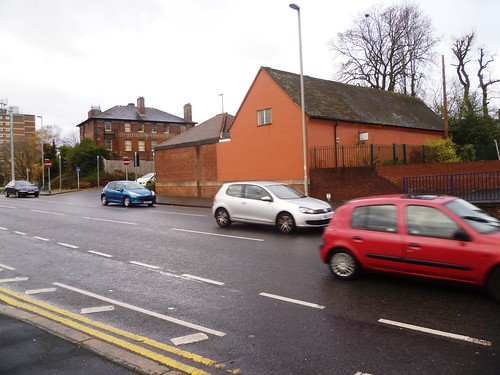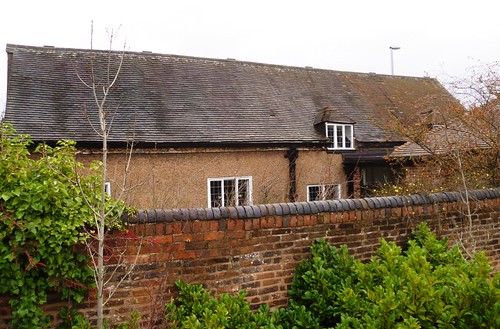The landscape of religious tolerance... may be mapped in space and time. In the UK there have been step changes to which religious groups were tolerated at different points in time, and the creation of a visible religious presence, permanent landmark buildings and graveyards, etc, may be traced and mapped from those dates. One such date is the "Act of Toleration" 1689, when the condition of accepting a foreign king (William) after the Glorious Revolution ousted his Catholic predecessor, was the toleration of protestant sects other than the Established Church of England. From that very year, Friends (Quaker) Meeting Houses appear, as in Stourbridge
Old Quaker burial grounds had no headstones or permanent marks, and so may appear just as playing fields in a modern city, as at Vallance gardens in the East End of London
Similarly, it is not until the late 18th-century, and association with violent revolution has wained after the 1745 Jacobite rebellion, that Catholic Chapels start to be built as open buildings for townsfolk, and then mostly not until the first years of the 20th-century, when they often have an outward appearance similar to Non-Conformist Chapels
 |
| Old Velho Cemetery, Mile End, London. Opened 1657 |
Amongst the oldest non-Christian religious community to establish a presence on the landscape were the Jews. The Old Velho cemetery in Mile End, London, was opened the year that they were officially allowed to settle in Britain 1657. Here the gravestones are flat, as has been the custom from them until now, amongst the Sephardic Jews
The first sizable Muslim community were Lascars, mainly Bengali sailors who settled around ports since the 18th century. Muslim worship was legalised by the Trinitarian Act of 1812, but places of worship were mostly ad hoc premises, rooms in peoples houses, etc. It was not until the sacrifice of young men in World War 1 that a cemetery was opened with a specific Muslim identity at Horsell Common
 |
| Horsell Common Cemetery |
 |
| Shah Jahan Mosque was built in 1889 |
The cemetery was built near
the Shah Jahan Mosque, the oldest purpose-built mosque in the UK, constructed in 1889. It was built by Dr Gottlieb Wilhelm Leitner, born of Jewish Parents in Pest, Hungary, studied in Maddrasahs in Istanbul, who established an institute that awarded degrees from the University of the Punjab -- all during the age of the British Empire.
There has been an explosion of landscape changes in this age of tolerance towards many, if not all, faiths.
 |
| Buddhist Peace Pagoda - now a landmark on the Thames |
The Nipponzan Myohoji Buddhist Order as part of the 1984 Greater London Council (GLC) Peace Year, built a Pagoda that is now a landmark on the Thames at Battersea. And Former Beatle George Harrison donated a historic country house and gardens to Hare Krishna







No comments:
Post a Comment